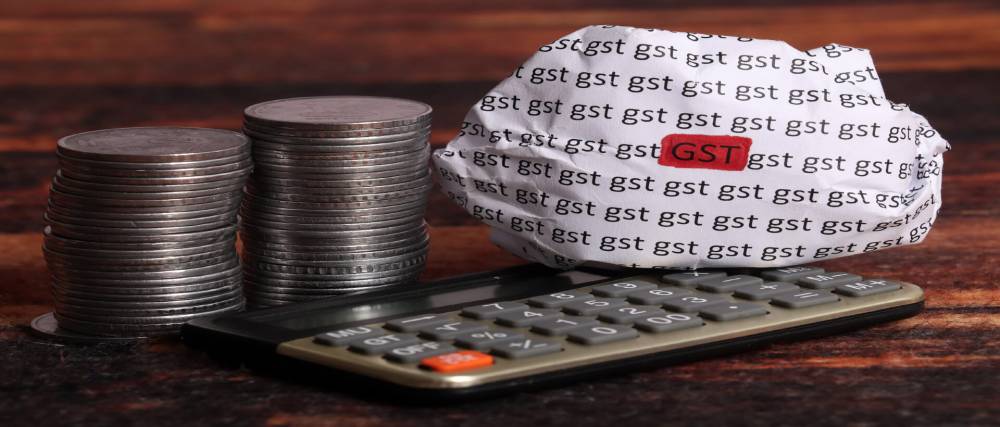GST compensation: how some states are borrowing,
 Published on
Nov-06-2020
Published on
Nov-06-2020
· GST compensation: how some states are borrowing, and which ones aren’t-The Indian Express-11th November 2020
(GS 2- Constitutional Bodies; GS 3- Indian Economy, Resource Mobilization)
In News
· The total GST revenue shortfall for the current fiscal was estimated at Rs 3 lakh crore, of which compensation cess collection was estimated at Rs 65,000 crore, leaving a compensation deficit of Rs 2.35 lakh crore.
What’s the matter?
· There have been shortfalls in tax collection as the Indian economy, is suffering from an exogenous shock of Covid-19 pandemic.
· The shortfalls in the tax collection under GST has caused some friction between the Centre and States.
· In order to resolve the issue Centre decided to borrow the money to compensate the states.
Why should the Centre pay states for GST loss?
· The GST Compensation Act, 2017 guaranteed States that they would be compensated for any loss of revenue in the first five years of GST implementation, until 2022, using a cess levied on sin and luxury goods.
· However, the economic slowdown has pushed both GST and cess collections down over the last year, resulting in a 40% gap last year between the compensation paid and cess collected.
What is the special window for borrowing?
· The Centre would borrow from the market and then act as an intermediary to arrange back-to-back loans to pay the GST compensation shortfall of Rs 1.1 lakh crore to state governments.
· This arrangement will not reflect in the fiscal deficit of the Centre, and will appear as capital receipts for state governments.
Why could states not borrow instead of the Centre enabling the borrowing?
· The earlier proposal was for a special window to be facilitated by the RBI and the Centre, but states would have had to tap the window separately.
· Differential rates with a wide variance in interest rates between the states with more debt and those with less debt.
· The yields for state development loans (which is the tool for market borrowing by states), are generally at a premium, higher than the yield on the central government’s government securities.
· So, it would have been costlier for states to borrow rather than the Centre borrowing at a uniform rate and then passing it on to them as a back-to-back loan.
How has the scheme progressed so far?
· Under the special window, the Centre has already borrowed Rs 12,000 crore in two equal instalments and passed it on to 21 states and three Union Territories on October 23 and November 2.
· The second round of borrowing was done at an interest of 4.42%, and the first round at 5.19%, lower than the cost of borrowing for states.
· The first tranche of the borrowing was carried out on October 23, where the Centre borrowed and transferred Rs 6,000 crore to 16 states and two UTs.
What is the way forward for the rest?
· The Centre and states should work in tandem displaying the highest standards of cooperative federalism. The center borrowing the shortfall is a welcome move. This will ensure a single rate of borrowing, thereby simplifying the entire process.
· However a long term solution is required.
· The GST Council as a body needs to regain its relevance.
· All aspects related to GST must be resolved within the framework of the council itself.
About Goods & Services Tax Council
· Goods & Services Tax Council is a constitutional body for making recommendations to the Union and State Government on issues related to Goods and Service Tax.
· The GST Council is chaired by the Union Finance Minister.
The Goods and Services Tax Council shall establish a mechanism to adjudicate any dispute
(a) between the Government of India and one or more States; or
(b) between the Government of India and any State or States on one side and one or more other States on the other side; or
(c) between two or more States, arising out of the recommendations of the Council or implementation thereof.
About Goods & Services Tax
· GST is based on the principle of destination-based consumption taxation as against the earlier principle of origin-based taxation.
· Pre GST era
o The Central Government levied tax on manufacture (Central Excise duty), provision of services (Service Tax), interstate sale of goods (CST levied by the Centre but collected and appropriated by the States) and the State Governments levied tax on retail sales (VAT), entry of goods in the State (Entry Tax), Luxury Tax, Purchase Tax, etc.
o There were multiplicities of taxes which was being levied on the same supply chain.
o This led to cascading of taxes, as taxes levied by the Central Government were not available as setoff against the taxes being levied by the State governments.
o A variety of VAT laws in the country with disparate tax rates and dissimilar tax practices, divided the country into separate economic spheres.
o Creation of tariff and non- tariff barriers such as Octroi, entry Tax, Check posts etc. hindered the free flow of trade throughout the country.
o The large number of taxes creates high compliance cost for the taxpayers in the form of number of returns, payments etc.
· GST Benefits
o This tax reform has led to creation of a single national market, common tax base and common tax laws for the Centre and States.
o Mitigation of cascading of taxes.
o Extensive use of Information Technology [through Goods and Services Tax Network (GSTN)], has led to greater transparency in tax burden, accountability of the tax administrations of the Centre and the States
o Improvement in compliance levels at reduced cost of compliance for taxpayers.
o E-way bills has eased has eased the movement of goods and services within the country
Advantages of GST for the government:
· Will help to create a unified common national market for India, giving a boost to foreign investment and “Make in India” campaign;
· Will mitigate cascading of taxes as Input Tax Credit will be available across goods and services at every stage of supply;
· Harmonization of laws, procedures and rates of tax between Centre and States and across States;
· Greater use of IT will reduce human interface between the taxpayer and the tax administration, which will go a long way in reducing corruption;
· It will boost export and manufacturing activity, generate more employment and thus increase GDP with gainful employment leading to substantive economic growth;
· Ultimately it will help in poverty eradication by generating more employment and more financial resources.
Advantages of GST for Trade and Industry:
· Simpler tax regime with fewer exemptions;
· Increased ease of doing business;
· Reduction in multiplicity of taxes that are at present governing our indirect tax system leading to simplification and uniformity;
· Will mitigate cascading of taxes as Input Tax Credit will be available across goods and services at every stage of supply;
· Reduction in compliance costs - No multiple record keeping for a variety of taxes - so lesser investment of resources and manpower in maintaining records;
· More efficient neutralization of taxes especially for exports thereby making our products more competitive in the international market and give boost to Indian Exports;
· Simplified and automated procedures for various processes such as registration, returns, refunds, tax payments, etc;
· Average tax burden on supply of goods or services is expected to come down which would lead to more consumption, which in turn means more production thereby helping in the growth of the industries manufacturing in India.
Advantages of GST to Consumers:
· Final price of goods is expected to be transparent due to seamless flow of input tax credit between the manufacturer, retailer and service supplier;
· Reduction in prices of commodities and goods in long run due to reduction in cascading impact of taxation;
· Relatively large segment of small retailers will be either exempted from tax or will suffer very low tax rates under a compounding scheme - purchases from such entities will cost less for the consumers;
· Poverty eradication by generating more employment and more financial resources.
Advantages of GST to States:
· Expansion of the tax base as they will be able to tax the entire supply chain from manufacturing to retail;
· Power to tax services, which was hitherto with the Central Government only, will boost revenue and give States access to the fastest growing sector of the economy;
· GST being destination-based consumption tax will favour consuming States;
· Improve the overall investment climate in the country which will naturally benefit the development in the States;
· Largely uniform SGST and IGST rates will reduce the incentive for evasion by eliminating rate arbitrage between neighbouring States and that between intra and inter-state sales;
· Improved Compliance levels of the tax payers will contribute greatly in improving the revenue collection of the States.









